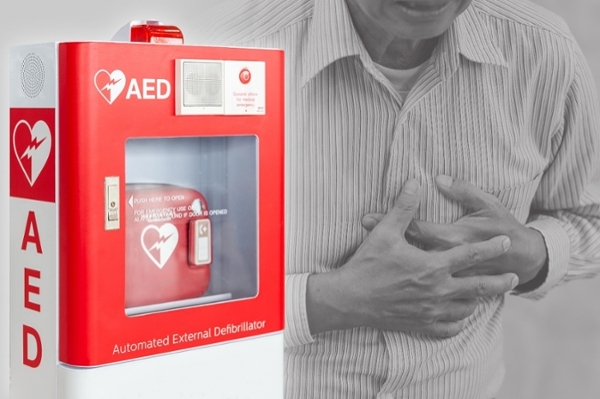
Cardiac arrest occurs when the heart suddenly stops beating or cannot circulate blood to the brain and other organs. Someone unconscious, unresponsive, or not breathing may be in cardiac arrest. If you see someone who has collapsed without warning, know these steps:
1 Call 911.
The 911 dispatcher can assist you while getting the emergency help you need.
2 Start CPR.
Hands-only CPR is as effective in the first few minutes as conventional CPR. To perform hands-only CPR, push hard and fast in the center of the person’s chest - about 100 beats per minute.
3 Use an AED.
Do not interrupt CPR to get an AED. Send someone else to find one if you can. When you call 911, the emergency dispatcher can tell you if there is an AED nearby.
To use an AED, follow these simple steps:
- Turn the AED on by pressing the green button and following its voice-activated instructions.
- Peel off the sticky pads and attach them to the patient’s skin, one on each side of the chest, as shown in the picture on the AED.
- Stop CPR and do not touch the patient once the pads are attached. The AED will then analyze the patient’s heart rhythm.
- The AED will assess whether a shock is needed. If a shock is needed, an automated voice will tell you to press the shock button. The AED will shock the patient without a prompt. Do not touch the patient while they are being shocked.
- The AED will tell you when the shock has been delivered and whether you need to continue CPR.
- Continue with chest compressions, if prompted, until the patient shows signs of life, or the AED tells you to stop so it can analyze the heartbeat again. Continue this process until emergency responders arrive.
Workplace Safety Instructors at DWC are available to train and certify your employees in CPR and AED. For more information, contact DWC at 800-252-7031, option 2, or download DWC’s Automated External Defibrillator Fact Sheet.
